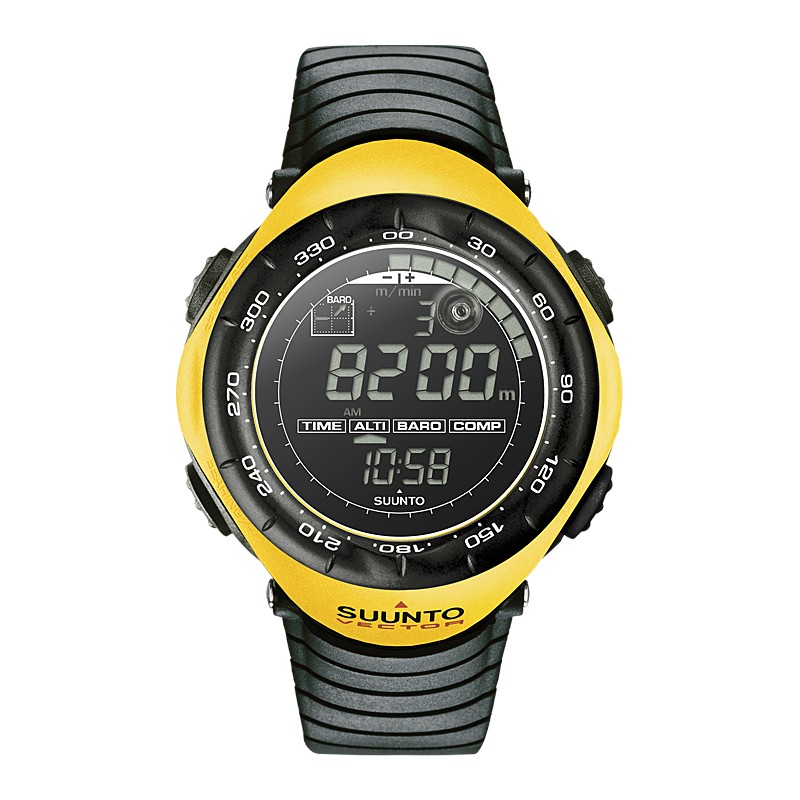Suunto Vector Review
Our Verdict
Our Analysis and Test Results
Altimeter
The Vector measures elevation in 10-foot or 3-meter intervals, which puts it in the middle of the competition in our tests. We love the altitude log. While this may not seem like a big deal, it is one of the features we use most. For up to 24 hours, the watch logs your total ascent, descent and number of runs. For skiers, it will log how many laps you take. For hikers and backpackers, it tells you true vertical gained. The only bummer is the log only goes for 24 hours where the Core goes for seven days.
Barometer
The Vector uses a small two part graph in the upper left corner of the screen to help you follow weather patterns. What does this mean to you? Well, for folks at most middle latitudes (lower 48 United States) in a 12-hour period if you loose four millibars then its going to storm; minus six millibars, then its going to storm pretty bad, eight or more millibars, you might as well go home because you are going to get pounded. Unfortunately, it doesn't work the other way for predicting good weather. While this graph was cool, the graph on the both the Casio Pathfinder models was way better.
Compass
The compass lets you adjust its angle of declination and will help you follow your bearing. This isn't appropriate as the only compass on an expedition, but it will give you a point of reference.
Ease of use and interface
The interface appears complicated at first and it's a little harder to navigate through than all the other watches we tested. But after to some time you get used to it. The mode button navigates you through the primary menu and the Start/Stop button navigates you through all the options within that menu. For example, the alarm, stopwatch, and timer are all under the Time function on the menu. There are also + and - symbol buttons to further help you navigate.
Display
Except at night, the display was the easiest to see, even during low or intense light. But at night, the back light is one of the low performers in our tests.


